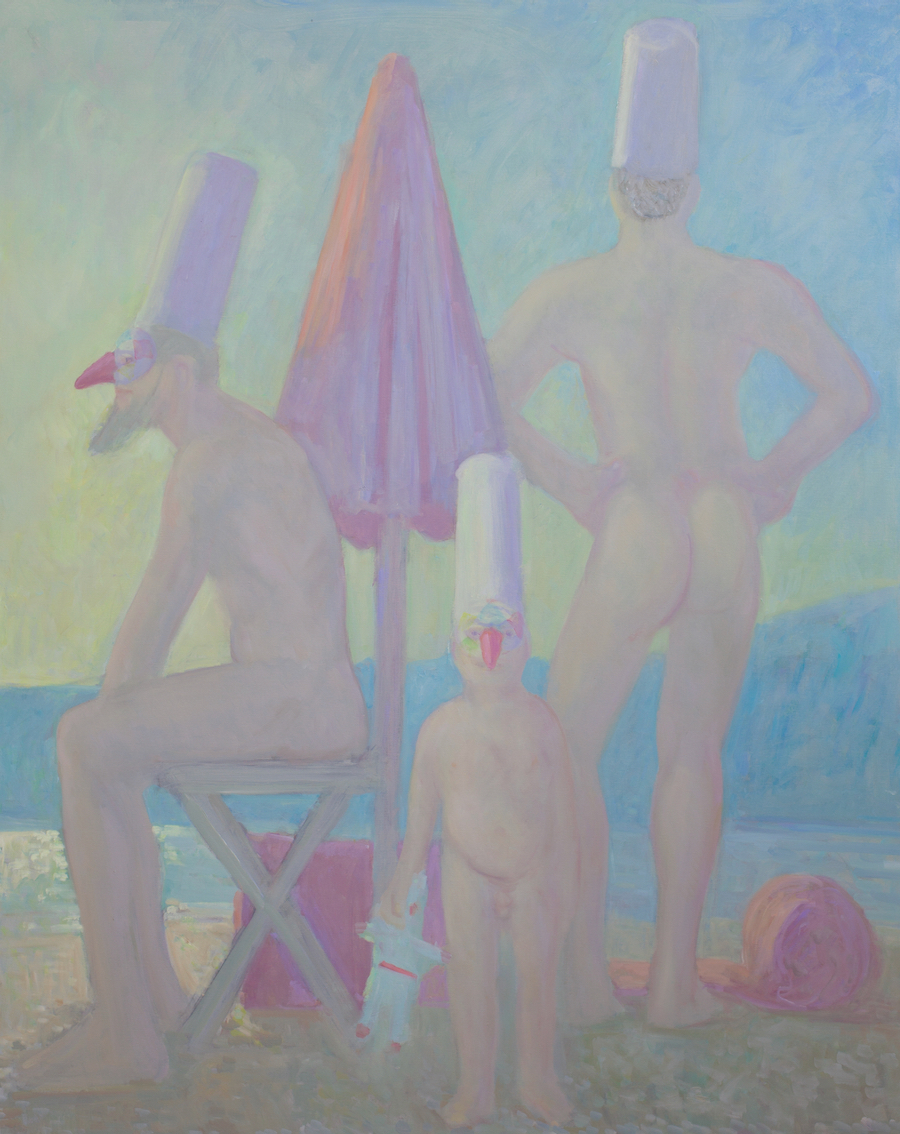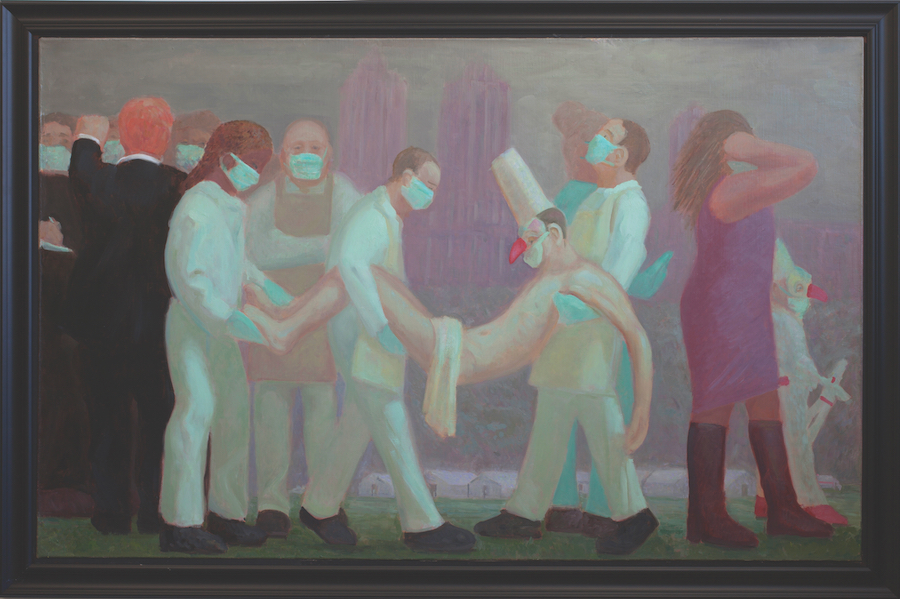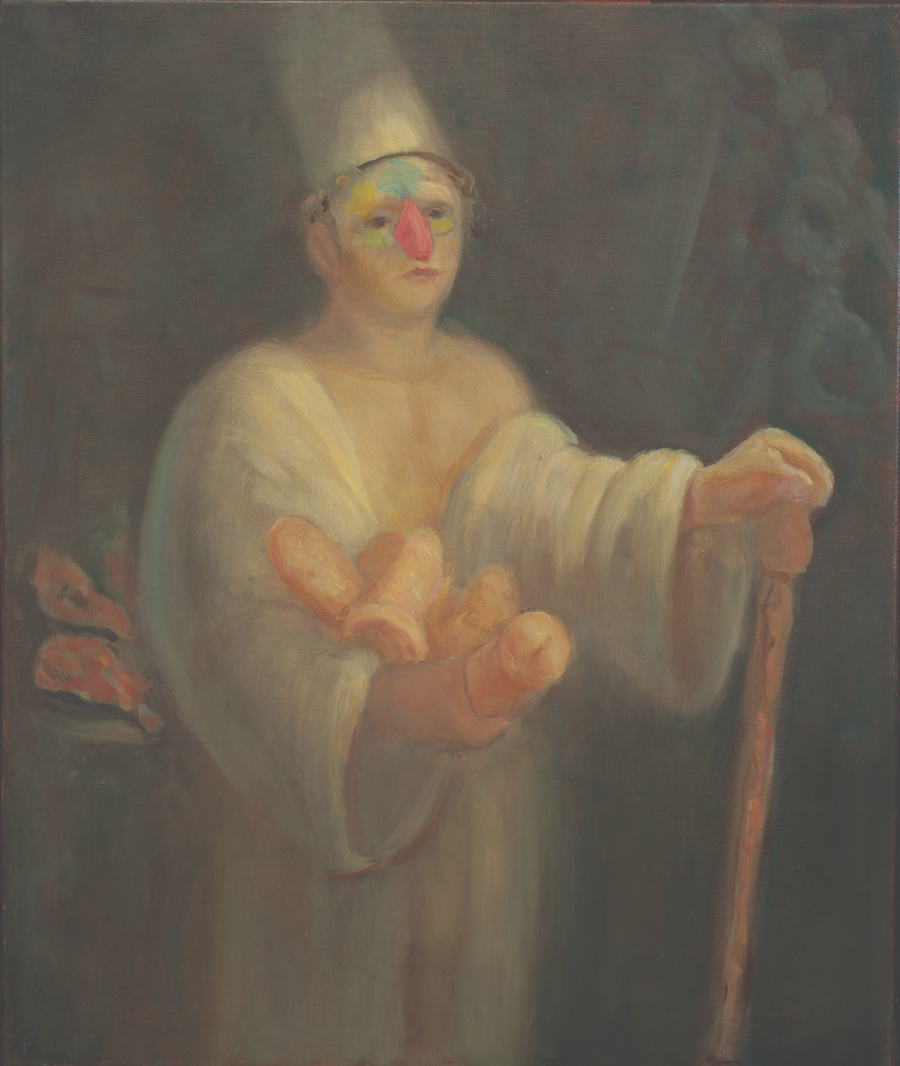“Since 1990, Punchinello has always been included as the primary actor in the narrative of my paintings,” Patrick Webb says. Though Punchinello is a classic commedia dell’arte character, Webb depicts him in scenes from contemporary LGBTQ life, in a style that subtly recalls 18th-century art. His work has been featured in exhibits at the Leslie-Lohman Museum of Art and the Provincetown Art Association and Museum, and in galleries in Provincetown and New York City. A show of recent work by Webb, “Punchinello Stories,” will be at the Ray Wiggs Gallery in Provincetown, opening Aug. 7.

Webb first discovered Punchinello in the paintings of Giovanni Domenico Tiepolo (son of Venetian master Giovanni Battista Tiepolo) during a visit to Venice in the late 1980s.
“The ’80s were a very rough period to be a gay man in New York City,” Webb says. “I knew a lot of people who got sick and died. My boyfriend of many years died, and I also became HIV-positive.” Watching the tragedy of AIDS unfold around him and not expecting to survive himself, Webb searched for a way to express in his art the profound devastation of what he and those around him were going through. “I saw it in other people’s paintings, painters I admired, most of them from other centuries, but also some who painted during the 20th century, such as Jared French. When I came across the character of Punchinello in the paintings of Tiepolo, I thought, wow, this is something I can use.”
The enigmatic Punchinello, a clownish figure hidden behind a beak-nosed mask and tall white hat, became a recurring subject in Webb’s work. “I began painting narratives of lives struck out early, because that was what I was seeing, using Punchinello as the central figure,” he says. Webb’s paintings The Lamentation and By Punchinello’s Bed, death-bed scenes done in 1992, were included in the traveling “Art AIDS America” exhibit of 2016. “They were very important paintings and received national recognition because of the poignancy they portrayed,” says gallerist Ray Wiggs.
Webb and Punchinello both survived the AIDS epidemic, and Webb, as a gay man living in 21st-century America, continues to use the character in “narratives that I experienced or wanted to experience or didn’t want to experience” and, beyond that, as part of the human journey through all aspects of a lifetime. “I realized that I had reinvented Punchinello, that he was different from the Italian figure — lighter, less grotesque, more of an everyman,” Webb says.

Referencing the philosophy of Heidegger and post-structuralist theorists, Webb, who is married to the psychoanalyst Brian Kloppenberg, says that he uses Punchinello as an “I/not I” to explore a “quality of becoming.” Punchinello, as a theatrical persona, “corresponds to certain notions of performativity in the 20th, 21st century — the idea that we perform our sense of self.”
Webb’s paintings in the Ray Wiggs Gallery exhibit were inspired by a trip to England and the Netherlands, during which he studied works by European masters. “I’ve always painted in dialogue with the history of art,” says Webb, who got his M.F.A. at Yale and is the son of Nancy Webb, an artist with deep Outer Cape ties. One of Webb’s pieces, for example, titled King of the Dildos, meshes Rembrandt’s playful representations of himself with Webb’s exploration of sex toy still lifes.
The series also reflects Webb’s interest in the relationship between the frame and the painting itself. “I’ve been framing paintings before they are finished,” Webb says. “This evolved out of my interest in [the French painter Gustave] Courbet and other early modern and pre-modern painters, for whom the frame was as much a part of the experience as anything else.”
Webb, who teaches art at Pratt Institute in Brooklyn, paints in smaller formats during the school year and focuses on large-scale pieces during the summer months. He is currently at work on two series, of what he calls Covid and anti-Covid paintings.

“My ‘Punchinello in Crisis’ paintings are extreme in their sense of tragedy, which is central again to what’s happening in this country,” Webb says. “Covid is the most extraordinary, horrible manifestation, but it’s been happening for a while with attitudes towards difference,” Webb says. His anti-Covid paintings, in stark contrast, are “about life, about Eros and delight, about everything that seems so far from our current experience.”
Much like those of us trying to find a balance between the woes and fears of the pandemic and some semblance of normalcy and joy, Webb says he is “oscillating between the two right now.”



